-

When the world is your oyster why return home to a struggling city?
Interview by Ellie Stathaki
-
Konstantinos Pantazis and Marianna Rentzou met at the Faculty of Architecture at the National Technical University of Athens before going on to study further and work in London, Rotterdam, Brussels and Tokyo. During stints at MVRDV and OMA, the pair started taking on independent work, which led them to form their own architecture practice in 2007; Point Supreme was born. A few months later, they returned to their home country and set up shop in Athens, which has been their base ever since.
Previous page: Interior view of Nadja apartment, 2014. (All images courtesy Point Supreme)
-
Did you feel you were going against the grain, returning to Greece?
Absolutely! It was a bold decision. Of course the crisis had not been felt yet, it was right before it started. It was a bold decision to give up well paid, kind of ideal jobs for a totally uncertain future in a place where not much contemporary architecture was going on. But we felt that there was so much to do there.
Which do you feel was your breakthrough project? What are you currently working on?
It was probably the Aktipis flower shop in Patras and the SixDogs cultural centre in Athens, as both were strong projects made with absolutely no budget, but their success was phenomenal. Currently we are finishing a house in Petralona, a house on a Greek island and a concept for an urban hotel.
Do you prefer certain types of projects? What role does the public realm play in your work?
We prefer projects with an urban impact: public projects rather than private spaces. We want to improve life in the city as a whole; that is why our private projects are being treated in a similar way to public ones. We enjoy working on anything. We have combined expertise at all scales of design, so we treat small projects like cities and urban projects like furniture. We don’t choose our projects, they choose us. We treat public space as a laboratory for fun.
-
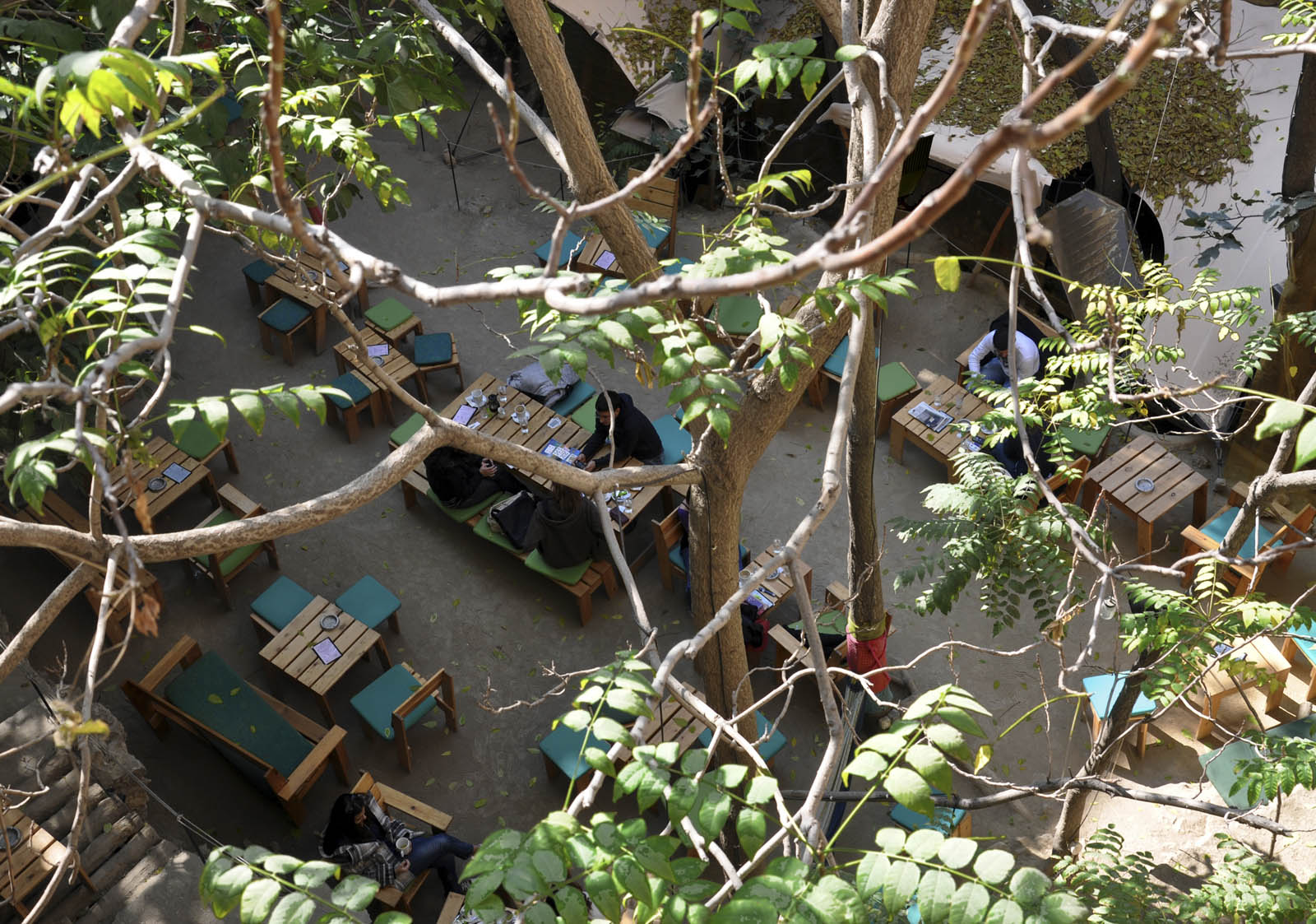
»The challenge is to stay and try to make something out of this mess.«
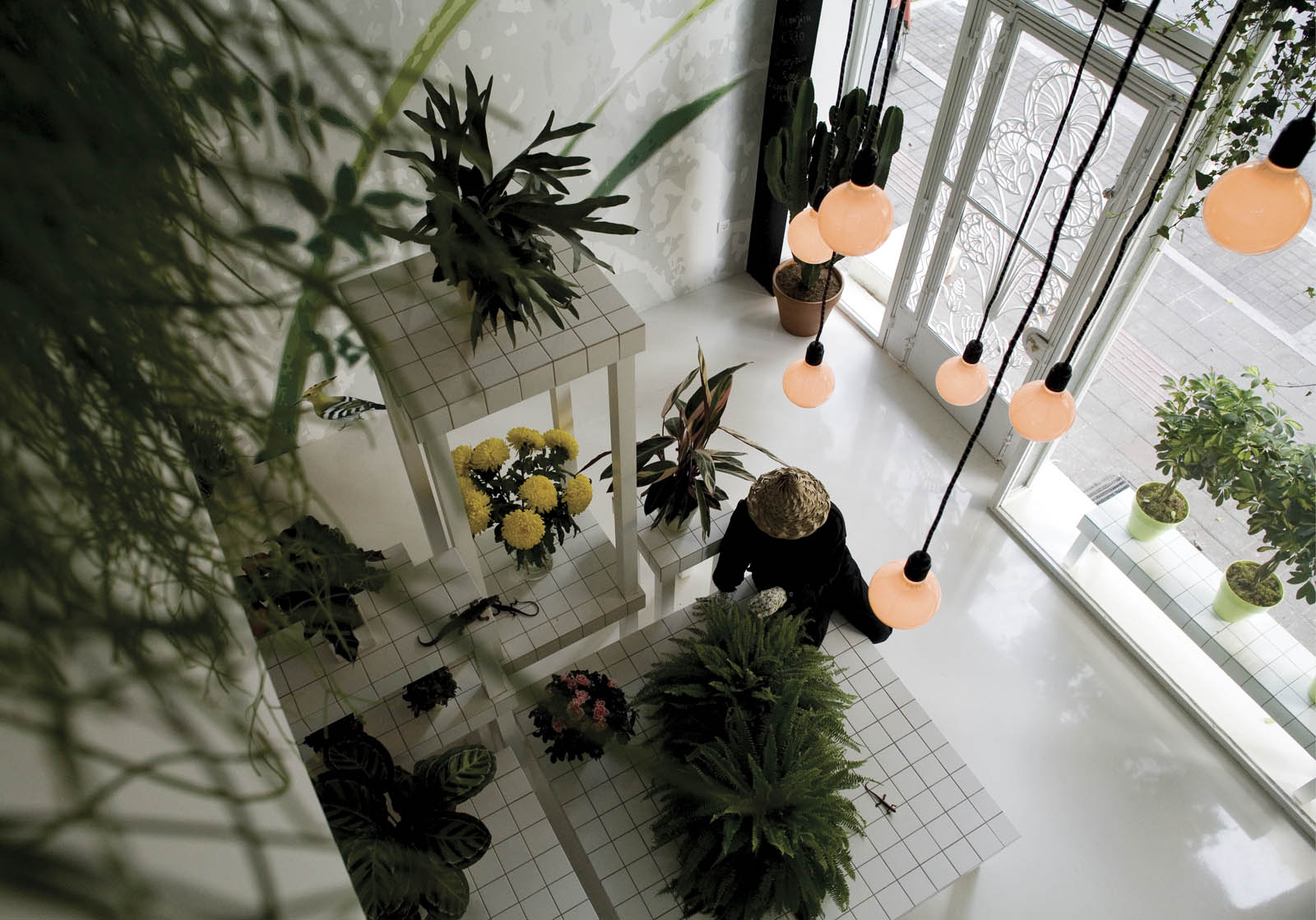
Left: Aktipis Flower Shop interior (2008). Right: Garden of SixDogs cultural centre (2010).
-
What informs your core design approach and aesthetic?
We have always been influenced by different ideas, philosophies, agendas and techniques and believe in the power of combinations. So we try to overcome prejudice and to synthesise oppositions. We often work with tight budgets so we have learned to turn problems into advantages.
What are the challenges facing young architecture practices like yours at the moment in Greece?
There is one main challenge; to survive; there is very little work, the whole construction sector has collapsed, plus taxes for the self-employed have been raised dramatically making it extremely difficult to survive economically. It is a tragedy that doesn’t make sense. So for young architects it is very hard to find paid work and to not simply give up and move abroad. The scene has worsened in the last years. But then, the further challenge is to stay and try to make something out of this mess. To develop new tools and increase our critical force. To make proactive architecture.
What is the role of the public realm in Athens – or the Greek city in general?
Public space has been extremely devalued in all Greek cities for a very long time. The modern cities were built by small private interests without any care for bigger amenities and public space. There is often not enough space for pedestrians to walk on. The recent crisis has actually brought the attention of society back to the communal: the urban and natural environment became a focal point again.
The kitchen of the Nadja apartment.
-
I particularly enjoyed your Chicago Biennale participation, where you explored Athens’ “hidden potential”.
The hidden potential of Athens is the topic behind a lot of self-initiated projects that we have been doing for the city since founding our office. These vary from radical to immediately realisable. The Chicago Biennale project is called The Playfulness of the Real and presents pairs of the most extreme opposite parts of our work; urban proposals next to photographs of realised buildings. Among them, there are common ideas that keep resurfacing in ways that surprise us. For example the Petralona House resembles a city, the Nadja house is like Faliro Pier. The Flower shop is like Athens Heaven. It is a very surprising and fun project.
One of the ongoing debates about public space revolves around the “informal city” and how urban space can be created spontaneously by users. Do you think this is true in Athens?
It is very true in Athens, especially since the crisis. There are many examples of citizens’ initiatives, such as Atenistas, who gather and improve spaces on their own, such as cleaning vacant lots, or painting blind walls. Another example is a park in Exarcheia, a central neighbourhood in Athens, that used to be a parking lot, but residents claimed it and turned it into a green park. There are a lot of such initiatives but our concern is that vision and identity are often missing, so the resulting spatial qualities are typically very poor.
-
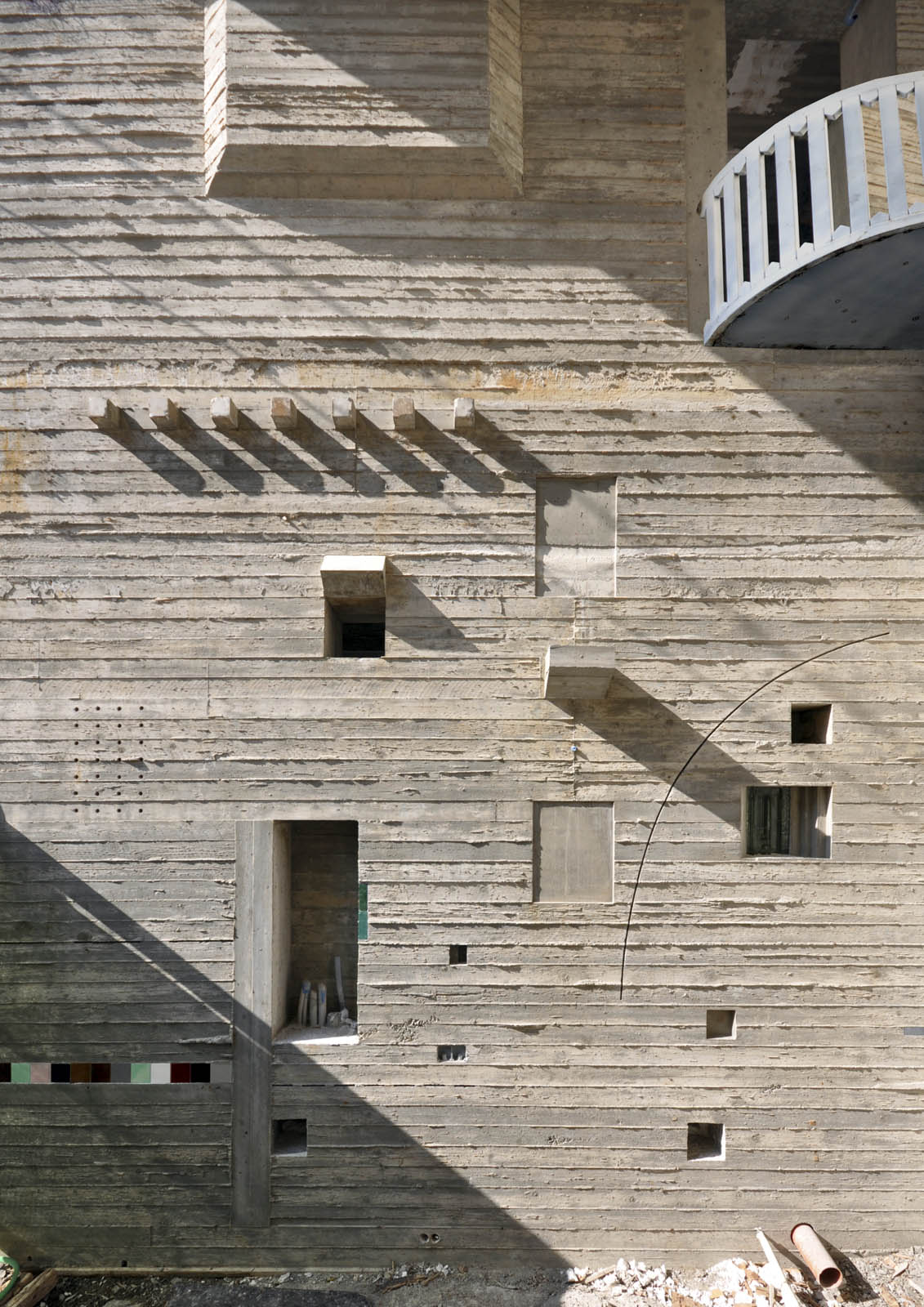
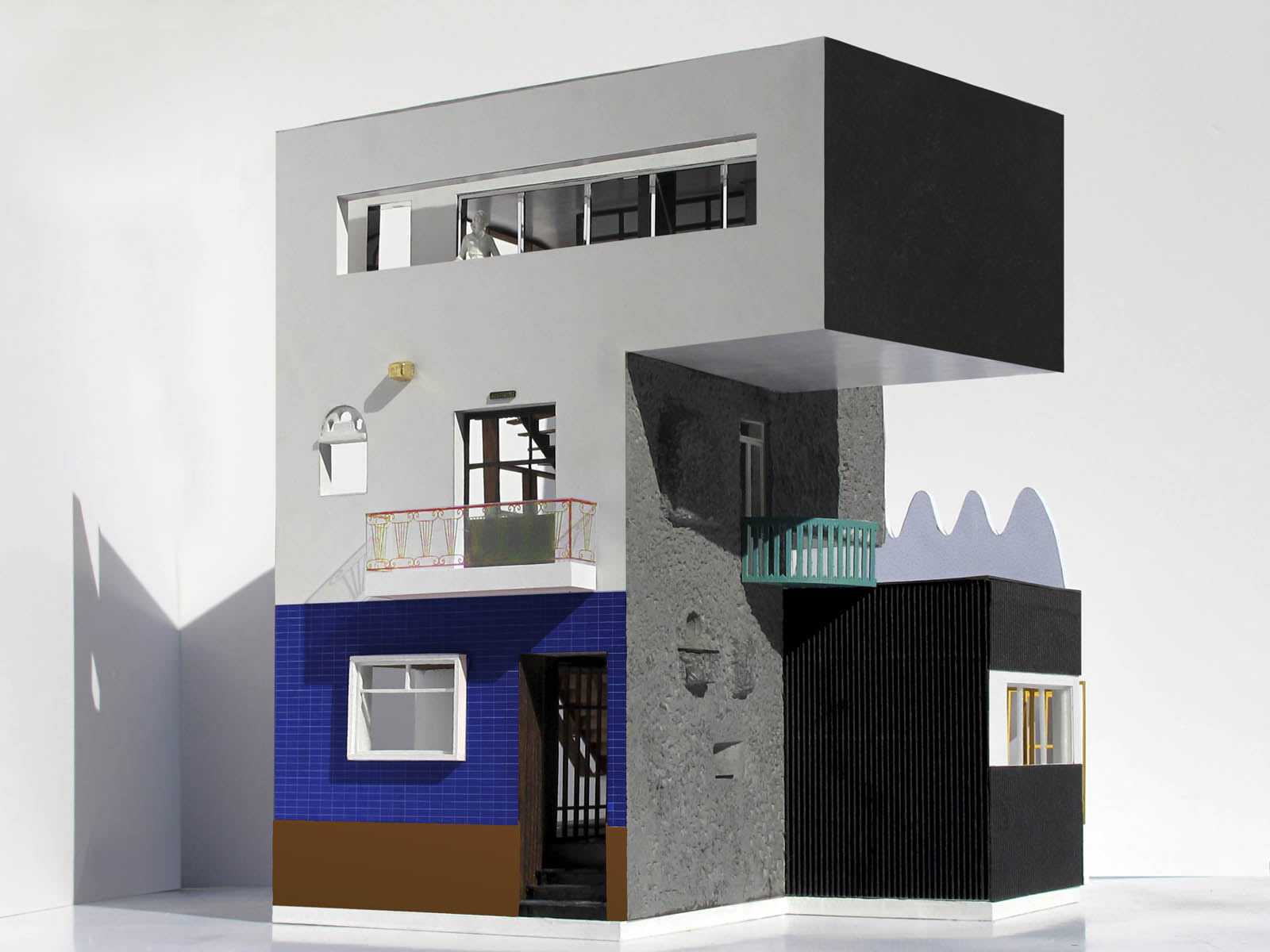
Left: Textured concrete façade of Petralona House. Right: Model of Petralona House (2015).
-
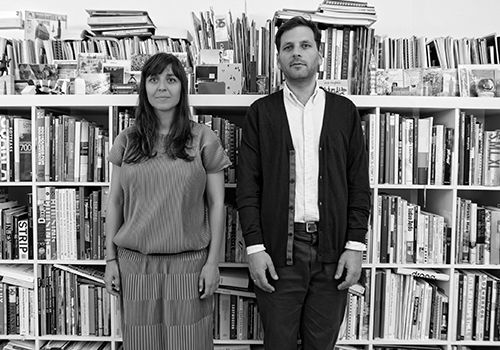
Point Supreme Architects was founded in Rotterdam in 2007 by Konstantinos Pantazis and Marianna Rentzou and is now based in Athens. Their work integrates research, architecture, urbanism, landscape and urban design.
PartnersKonstantinos Pantazis studied architecture at the National Technical University Athens (2002), and did a Master of Excellence in Architecture at The Berlage Institute Rotterdam (2002-2005). He has worked for a variety of offices in Athens and abroad including: MVRDV in Rotterdam (2007-08), Altoon and Porter in Amsterdam (2006), 51N4E in Brussels (2005), Farjadi Farjadi in London (2004), OΜΑ-Rem Koolhaas in Rotterdam (2003-04), Yushi Uehara in Amsterdam (2003) and Jun Aoki in Tokyo (2002), He currently teaches at Patras University.
Marianna Rentzou studied architecture at the National Technical University Athens (2002), and did her Master of Architecture at the Bartlett School of Architecture in London (2003-2004) followed by further studies at the Design Academy Eindhoven with Droog Design. After working in Athens for a while, she went to MVRDV in Rotterdam (2005-2006), then OMA - Rem Koolhaas in Rotterdam (2005, & 2007-2008). At OMA she worked on a wide range of large scale projects in the Middle East and led the Dubai Creek theatre and Dubai Next in Basel.
Ellie Stathaki is Architecture Editor at Wallpaper* magazine. She was born in Athens, raised in Larisa, trained as an architect at the Aristotle University of Thessaloniki and studied architectural history at the Bartlett in London. After a brief time in architecture practice, she focused on architecture journalism. She has contributed to Blueprint, The Financial Times, The Guardian, as well as the books 1,000 Buildings You Must See Before You Die (Quatro, 2007) and the World Atlas of Contemporary Architecture (Phaidon, 2007). She is the co-author of the New Modern House: Redefining Functionalism (Laurence King, 2010) and Todd Saunders: Architecture in Northern Landscapes (Birkhauser, 2012), and the author of the Wallpaper* City Guides for Antwerp (Phaidon, 2010 and 2013) and Athens (Phaidon, 2012). Occasionally she curates exhibitions.
Is there a public space that you feel works in Athens?
It might sound strange but the public space that works the best is the metro system. It is extremely clean and civilised. People seem very aware there. It is a very different world to the city above. It has to do with the fact that it is a space naturally free of cars and that it is well maintained. It is designed, after all. So people return this generosity. Another type of public space that works is the hills; also spaces that cars cannot access. For example the central Philopappou Hill; it’s paradise. Same goes for the beaches around the city.
…and which are the parts that you feel need rethinking? There are for example your proposals for Syggrou Avenue and Faliro Bay.
Nearly all parts of the city need rethinking! For sure the relationship between the city and the water is a critical issue, and that is the topic of these two projects - the coast and the connection to the sea. But other parts are also critical, such as green space and the completely ignored network of hills in the city. All these have a tremendous potential to transform the way the city is experienced on a daily basis and communicated (branded) at large, both at home and abroad.
Finally; what single thing would improve urban space in Athens?
The increase of soft surface, demolition of unnecessary walls and the prohibition of cars from certain areas.
-
Search
-
FIND PRODUCTS
PRODUCT GROUP
- Building Materials
- Building Panels
- Building technology
- Façade
- Fittings
- Heating, Cooling, Ventilation
- Interior
- Roof
- Sanitary facilities
MANUFACTURER
- 3A Composites
- Alape
- Armstrong
- Caparol
- Eternit
- FSB
- Gira
- Hagemeister
- JUNG
- Kaldewei
- Lamberts
- Leicht
- Solarlux
- Steininger Designers
- Stiebel Eltron
- Velux
- Warema
- Wilkhahn
-
Follow Us
Tumblr
New and existing Tumblr users can connect with uncube and share our visual diary.
»Don‘t fight forces, use them.«
Richard Buckminster Fuller
Keyboard Shortcuts
- Supermenu
- Skip Articles
- Turn Pages
- Contents


